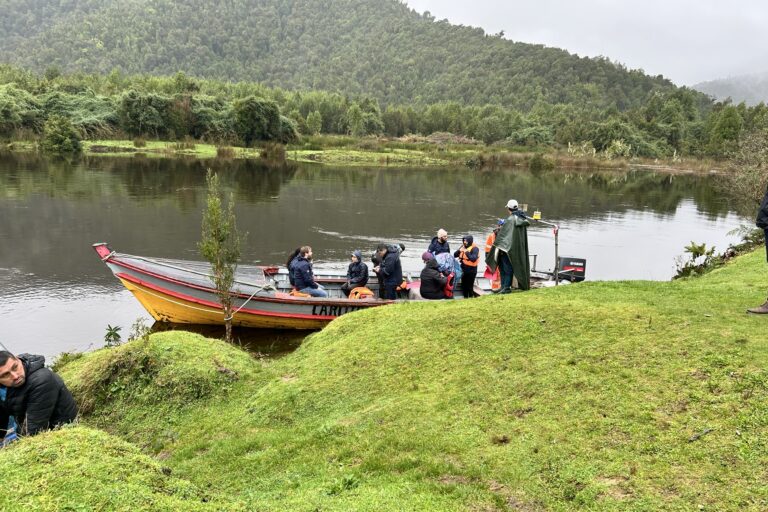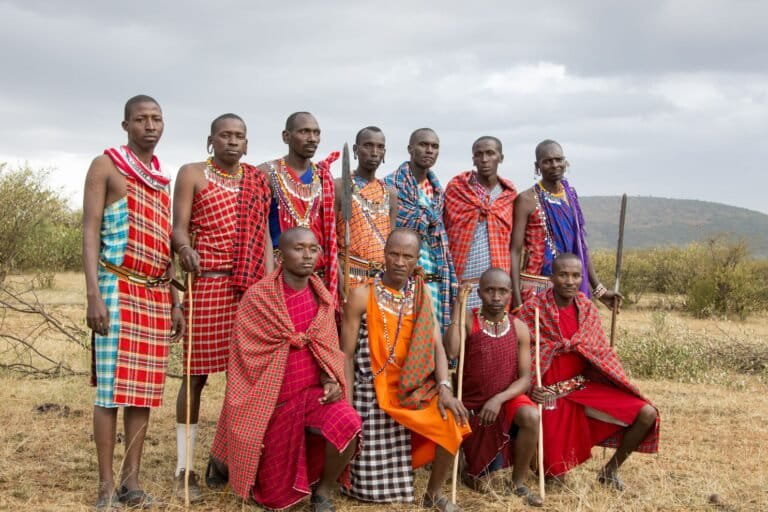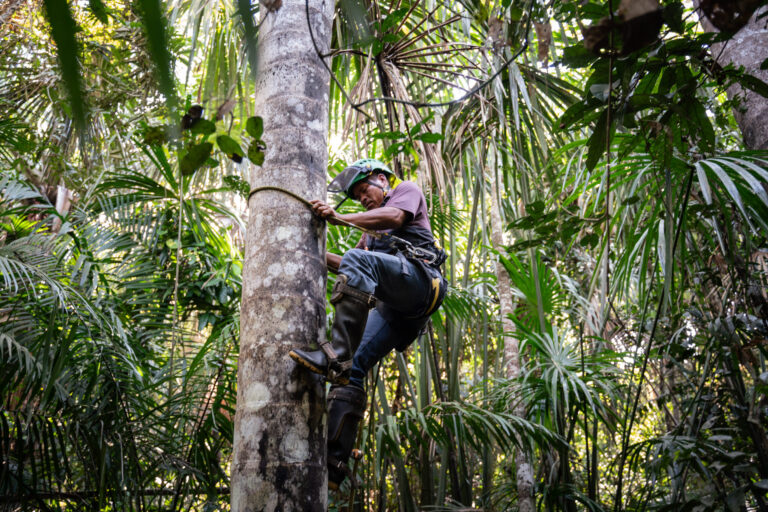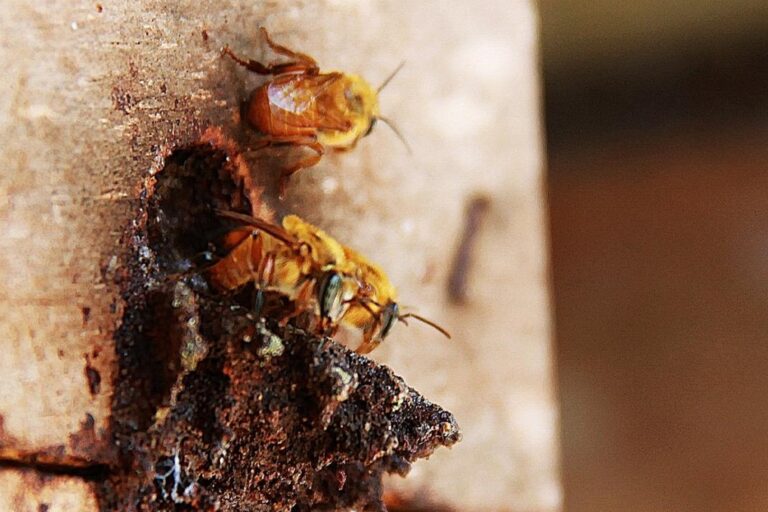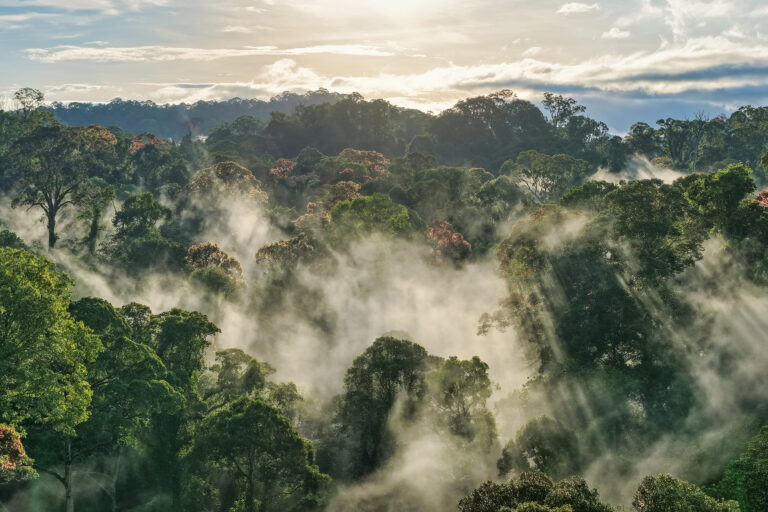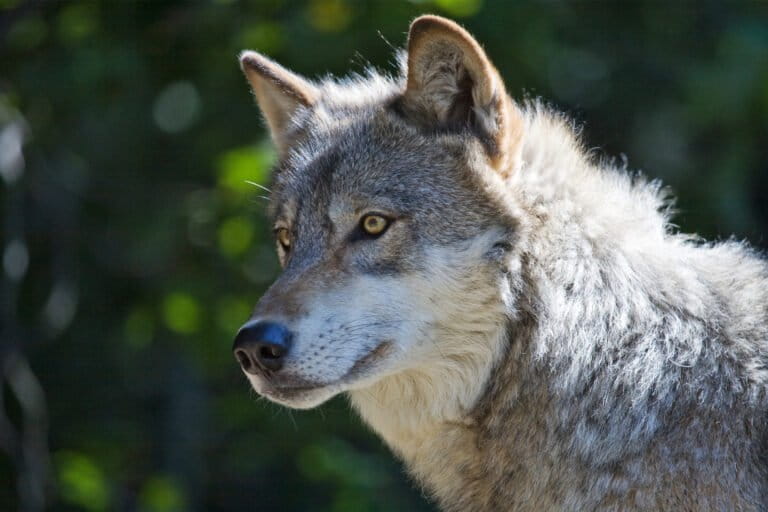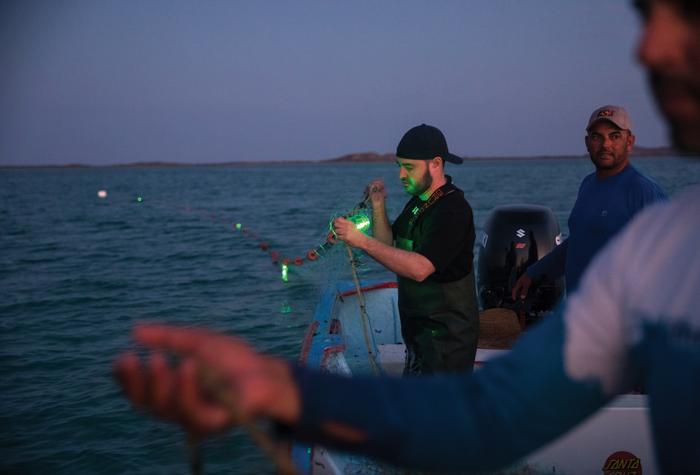- The world’s oceans are a source of food for billions of people worldwide, but our appetites have had a deleterious effect on marine ecosystems for hundreds of years now.
- Creative minds are increasingly finding new and more sustainable ways to feed the world via some unexpected areas of the oceans.
- Here are 10 seafoods you may never have heard of but may see soon on a menu or superstore aisle.
If you live in a city or far from the ocean, the word “seafood” might evoke limited imagery. Baked fish fillet. Curry of shrimp, crab or fish. Seaweed jacketing sushi. Or a glob of caviar, if you’re able to afford it.
But the massive ocean pantry has a lot more to offer. From parts of marine plants and animals you may not know were edible, to familiar seafood transformed into unexpected culinary delicacies, some of these ocean edibles are now making their way into mainstream restaurant menus and superstore aisles — food that could reduce stress on our oceans.
Here are 10 of them.
-
Sea grain
Yes, you read that right. Just like expansive fields of rice, wheat, chia, quinoa or rye on land, meadows of grain grow underwater. In a paper published in Science in 1973, researchers described how the Seri, an Indigenous group living along the Gulf of California in the Mexican state of Sonora, have for generations harvested grains from eelgrass (Zostera marina), a kind of underwater marine flowering plant. After harvesting, the Seri people would turn these grains into flour — just like people the world over do with wheat or rice. They would dry and thresh the grass, collect the seeds, then put the seeds through a process of toasting, and pounding to turn them into flour. Then they would mix the flour in water, and flavor the gruel with honey, oily seeds from other plants, and sometimes sea turtle oil.
Now, a Michelin-starred chef in Spain, Ángel León is on a mission to popularize Z. marina grains for urban folks. Having earned a name in the culinary world for highlighting obscure marine foods on the menu of his restaurant in Cádiz, Aponiente, León has partnered with marine researchers at the University of Cádiz and the regional government to try and cultivate eelgrass in the salt marshes of the city. León’s plan, according to Time, is to use the eelgrass grain to make bread, oil and even ferment into sake. Being able to nail the conditions of water, temperature and salinity needed to grow eelgrass could yield other benefits — it could be helpful in restoring disappearing eelgrass meadows around the world, home to sea turtles, sea horses and other marine animals. Moreover, since eelgrass doesn’t require freshwater to grow, these meadows could help boost food production in a water-scarce future, while sequestering excess carbon, León told the Guardian.

-
Sea truffles
Truffles, those earthy, pungent, expensive fungi synonymous with fine dining, have an ocean analog. Meet Vertebrata lanosa, a red algae that some chefs have nicknamed the truffle of the sea. These wiry algae, said to taste and smell a lot like truffles with ocean overtones, are known to grow mostly on the cold-water seaweed Ascophyllum nodosum around the shores of the British Isles and countries like Iceland, Norway and Canada. People typically hand harvest these algae from the wild.
A few companies are now trying to position sea truffles as a cheaper, more sustainable alternative to regular truffles, where the seaweeds are allowed to grow back after each harvest. Whether natural harvesting will keep up with demand, if it rises, remains to be seen. Some researchers have noted that “the growth of V. lanosa needs to be assessed in more detail and over longer time periods to gain knowledge on how to harvest the alga sustainably.”

-
Vegetarian caviar
Like truffles, another luxury food that’s found a substitute in seaweed is caviar: highly prized salted fish roe or egg masses that can cost thousands of dollars per kilogram. Caviar typically comes from large-bodied fish like sturgeon (family Acipenseridae) and paddlefish (family Polyodontidae), many of which are critically endangered. Although most caviar today is extracted from farmed fish, there are still ethical questions about egg removal processes, and investigations suggest that sturgeon poaching for “wild” caviar continues. Other fish roe are sometimes used as alternatives to caviar, such as those from lumpfish (Cyclopterus lumpus) and Atlantic cod (Gadus morhua), but the populations of these species are also on the decline.
Enter vegetarian caviar: salted gelatinous pearls made from large seaweeds or kelp like Laminaria hyperborean. Spread some kelp caviar on toast or use it as garnishing, as chefs around the world seem to be increasingly doing, and you could have a cheaper, vegetarian substitute to the lumpfish, cod and roe. Kelp caviar also has a longer shelf life of up to three months after opening, according to Caviart, a Danish company that makes kelp caviar. That’s about three times longer than opened fish caviar. Could kelp caviar be the “roe” of the future, as Caviart claims? Or will the demand for sturgeon roe be hard to shake?

-
Herring spawn on kelp
There’s another delicacy that involves both kelp and roe.
That’s kelp coated in the eggs of Pacific herring (Clupea pallasii), and it’s a highly prized traditional food among the First Nations of British Columbia, Canada, as well as Alaska and Washington state, U.S.
Unlike caviar, the herring isn’t harvested for its eggs. Instead, every year, when the fish come to B.C.’s coastal waters to spawn around February to April, the First Nations either suspend lines of kelp, where the female herring come and lay millions of eggs, or they harvest kelp where the females naturally deposit their eggs. For generations, the First Nations have been trading herring spawn on kelp with neighboring tribes. Now, they also process and package a large part of their crunchy product for markets in Japan, where it’s a hit with sushi lovers.
Pacific herring are important not just for the Indigenous peoples of B.C. but also for wildlife like salmon, wolves, sea lions, otters and seabirds that wait each year for the fish to arrive in droves. But all’s not well with the herring. The First Nations have been warning of crashing herring populations on Canada’s west coast. They have asked for a moratorium on commercial fishing of the species until stocks build up again.
See related: By cultivating seaweed, Indigenous communities restore connection to the ocean

-
Kelp booze
Anyone up for a kelp ale? Maybe some kelp rum? Or perhaps a touch of kelp flavor in your cocktail?
From the U.K. to Sweden, the U.S., Scotland and Canada, breweries around the world have been crafting beer brewed and flavored with kelp. And it’s not just beer. Spirit producers are experimenting with kelp-infused rum and gin, and whiskey aged in casks that have been charred using seaweed. Kelp is also making its way into cocktails like martinis.
We’re mentioning kelp a lot here, and that’s because these seaweeds are incredibly versatile. They can be farmed easily along shorelines — Asian countries like China, Japan and South Korea have cultivated seaweeds, including kelp, for hundreds of years. These large algae are good for the climate because they absorb excess carbon from the atmosphere, de-acidify the ocean, and need no fertilizers. And they can be harvested, processed and used in a whole range of foods, from flour to make cakes, to pickles, kimchi, soup and now alcohol.

- Fish jerky
Those perfect fish fillets you may have ordered in the restaurant? The filleting process leaves behind a ton of waste — not just the head and bones, but also imperfect trims and cuts that weren’t the desired shape or size. These offcuts may get used in pet food or fertilizer, or they may just get discarded. But what if you could turn some of the “undesirable” but perfectly edible bits into a tasty snack? That’s what Nick Mendoza, a former marine scientist, figured out how to do with his line of fish jerky.
After a lot of testing to create a product “with the taste, texture, and aroma of beef jerky,” his company, NeptuneSnacks, now sells jerky made out of whitefish that are caught on the U.S. West Coast by small-scale fishers. Passionate about reducing food waste and inefficiencies along the seafood supply chain, Mendoza says his fish jerky is sustainable and traceable. The company sources fish scraps from fisheries that are Marine Stewardship Council certified, a voluntary certification tool that sets sustainability standards. Then they process and manufacture their products in Seattle, not too far away. Moreover, NeptuneSnacks provides a QR code on the jerky package that the customer can scan to learn where the fish inside was caught and by whom.

-
‘Unloved’ treasures
Scup or northern porgy (Stenotomus chrysops). Triggerfish (family Balistidae). Silverbelly (Gerres spp.). Lizardfish (family Synodontidae). Needlefish (family Belonidae). It’s not every day you see these marine creatures displayed in your local fish markets, supermarket freezers or listed on restaurant menus. Often caught accidentally while fishers look for the more popular species, they tend to get categorized as low value, undesirable or even “trash.” These animals usually get discarded or used in animal feed and fish meal. But increasingly around the world there’s a move to diversify our seafood palates by including these unloved marine animals. Many are as delicious as the popular seafood you eat, although you may have never heard of them. And they’re often available more easily and in larger numbers than the limited overfished varieties.
In India, for example, marine geographer Divya Karnad has set up InSeason Fish, a collective that creates awareness about all the non-threatened, little-known seafood varieties that can be sustainably eaten each month. The group’s materials direct consumers to species such as silverbelly, lizardfish and anchovies (family Engraulidae), and away from more popular, overfished fare like seer fish (Scomberomorus guttatus) and pomfret (family Bramidae).
In other parts of the world, chefs are leading the way. Chef León, for example, has created his entire menu around fish that would otherwise get discarded there, like pandora, krill, sea bream, and mackerel.
As the saying goes, one man’s trash is another man’s treasure.

-
Eating the invaders
One way to tackle uncontrollable numbers of invasive species — those introduced to new regions by some deliberate or accidental human action — is to eat them. The lionfish (Pterois volitans and P. miles) is the current poster child of this narrative. If you’re in the U.S., perhaps you’ve eaten this spiny, mohawked fish. They’re native to the Indian and South Pacific oceans, but have become established in the Atlantic, where they have no known predators and are gobbling up native fish species. And so, urged by the National Oceanic and Atmospheric Administration, chefs started serving up lionfish in their restaurants, while grocery stores like Whole Foods stocked lionfish fillets.
People are turning several other marine invasives into culinary delicacies. Chef Bun Lai, for example, has created his menu around invasive species. Miya’s, his family’s restaurant in Connecticut, serves lionfish but also species that are invasive elsewhere, like the Asian shore crab (Hemigrapsus sanguineus), native to the Western Pacific Ocean; the green crab (Carcinus maenas), native to Atlantic Europe and North Africa; and the periwinkle (Littorina littorea), a snail that’s native to Europe.
The idea is that by creating a culinary demand for invasive species, we can cause their populations to collapse, in turn helping native species recover. After all, humans have overfished several species, like Pacific herring and Atlantic cod, nearly to extinction. But eating invasive species may not have the desired effects for several reasons, some scientists have argued. For example, there’s limited evidence to suggest this strategy can eradicate an invasive species, which typically tend to have high reproduction rates, the researchers say. And creating a demand for an invasive species could create an incentive for their populations to be maintained, or even cause their spread to other areas.
View all of Mongabay’s reporting on marine issues here.

-
You eat farmed fish. But what’s your farmed fish eating?
Much of the seafood the world eats comes from fish farms, or aquaculture. More than half, in fact. That should take some pressure off our oceans, but there’s a problem. Just like farmed land animals, farmed fish need to be fed. And much of their feed comes from fishmeal and fish oil that’s made from wild marine life like anchovies, sardines, krill and mackerel — the same species that predators like seabirds, bigger carnivorous fish and cetaceans depend on, as do local fishing communities. So, some people are looking at alternatives. You could use proteins from crops like wheat and corn, but they don’t have the ideal nutritional profile the fish need.
But other options are emerging: insects and bacteria!
In Kenya, for example, entrepreneur Talash Huijbers founded InsectiPro, a farm that raises black soldier flies (Hermetia illucens) and their larvae, which she sells as fish feed. Other insect farms like Netherlands-based Protix and South Africa-based AgriProtein are doing the same.
Then there’s bacteria. Using modern fermentation and biotechnology techniques, companies like Massachusetts-based KnipBio and California-based Feedkind are producing bacterial protein to be used as fish feed.
If insect and bacteria fish meal become mainstream, your farmed fish and shrimp could become more sustainable choices than they currently are.

- Sea gelatin
The ocean gives us food. But it also gives us a sea of ingredients, many of which can be extracted from discards of the seafood processing business. Processes like beheading, de-shelling, removal of fins, de-scaling, gutting and filleting can generate “waste” that’s as much as 50% of the animal’s weight. But why throw away parts that we could transform into useful ingredients?
Fish oil, for example, is a common marine ingredient that goes into supplements and animal feed. There’s also carrageenan, a common food additive that’s extracted from a kind of red seaweed and used as a thickener in a range of products, like ice cream, peanut butter and pudding.
Another marine ingredient aiming to replace a land-derived product is fish gelatin. Used to thicken and stabilize foods like jellies, soups and sauces, gelatin is usually derived from the bones, skin and connective tissue of terrestrial livestock, such as cattle and pigs. But the use of these animals comes with climate, religious and health concerns. So the discarded parts of marine animals could offer a sustainable alternative. To create gelatin from materials extracted from the scales of species like sea bream and red tilapia, from the leftover fins from canned tuna processing, and from solid waste from surimi (fake crab) processing.
The global fish-gelatin market has been growing steadily, according to a report published by the Portland, Oregon-based firm Allied Market Research that predicts the market could reach $496.3 million by 2030, up from $276.1 million in 2020. But there are some challenges to mainstreaming fish gelatin in food, pharmaceuticals and other industries, according to a recent paper in Nature. The extraction process is currently not the cleanest. Moreover, fish gelatin handles differently than beef or pork gelatin. Gelatin extracted from fish melts at a lower temperature than the latter, for example, and has, unsurprisingly, a strong fish smell.
But if you don’t mind the idea of a fishy, melt-in-your-mouth Jello, perhaps give fish gelatin a go?
Shreya Dasgupta is an independent science writer based in Bangalore, India. Follow her on Twitter via @ShreyaDasgupta.
Related listening from Mongabay’s podcast: Kelp cultivation for human consumption is just one way Indigenous conservationists are working to fix ecosystems. Listen here:







